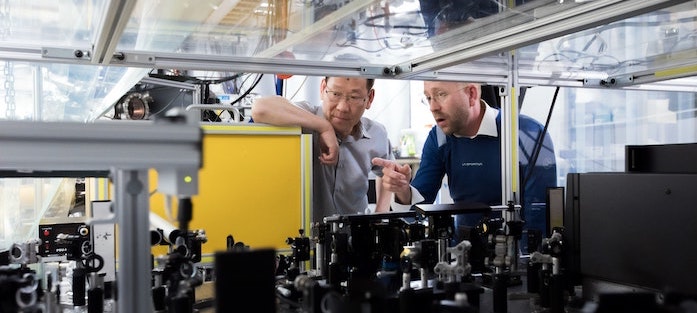Setup Time Reduction
For many manufacturing processes, setting up a machine to change from one product to the next is the biggest part of the process. Because it is a hassle, we try to do it as infrequently as possible, so we don’t get good at it and it takes a long time and we need to run large batches to justify our long setup times. Implementing a Lean Enterprise turns this theory on its head – we want to reduce inventory and make smaller batches, so we need to set up more often and need to reduce the time it takes so our costs don’t blow-out. The benefit is, doing setups more often means we get better at it. Here is an overview of the steps we take when addressing setup reduction.
1. Observation

Firstly let’s observe the setup process; note the steps and how long each step takes. Note how far the operator has to travel to get the tools, dies and material he needs. Does he have trouble finding anything? All of these observations will help in understanding the challenges in each setup.
2. Remove Obvious Waste
This is where your good housekeeping and Practical 5S is so important. Every minute the machine we are changing over is idle is lost time, so we don’t want the operator to spend ANY time looking for things or information – it all needs to be at hand and good 5S will assist here.
3. Identify Internal and External Setup Steps
Now that the obvious waste is removed, we need to look at each step and determine if it is internal or external setup. Internal setup is the steps that MUST be done when the press is stopped. External setup is the steps that can be done while the machine is still running.
To help clarify, I like to use the pitstop analogy – in Formula One Racing keeping the car going is the most important thing but to change tyres and refuel, the car MUST be stopped. So for pit stops, everything that can be organised BEFORE the car pulls into pit lane is already to go – everything is at hand, people trained; this is our EXTERNAL setup. The gathering and fetching and decide who is going to do what is all done while the car is still doing its circuits. As soon as the car pulls in the INTERNAL setup begins; tyres changed, fuel added, then off it goes.
We need to think about our machine setups this way to – look at each step and ask if this can be done while the machine is still running. Tasks like knowing which die to load next, finding the material and work orders, having all of the hand tools at hand. These can be done before the last run stops. It may be the operator that does these tasks; it may be a setup person or supervisor. Your business will need to determine the best way to do this for your situation. Having all tools clearly identified and stored in a set location will make finding the tools easier.
4. Reducing Internal Setup
As soon as the last run is finished the changeover begins and we are racing against the clock to get the machine running again – everything needs to be ready. To help we can colour code bolts and paint the front of the dies to make it clear which way they go into the press. Creating simple, one-page setup cards will also reduce the internal setup times. These cards show the important information and dimensions, clearly layered out. The operator can easily remind himself of the details of this particular setup.

5. Monitor and Improve
After the initial setup reduction blitz, begin to measure and record each setup. Have the charts displayed by each machine with targets and space to note improvement ideas and where things may have gone wrong for a particular setup. Meet each week to discuss setups and improvement ideas. Are there any ideas that could be shared across machines? Do some setup cards need clarification? How do we take the 5S to the next level?
We hope these few steps will help to reduce your setups; observe the process, determine which steps are internal, which are external and then monitor and continuously improve.





